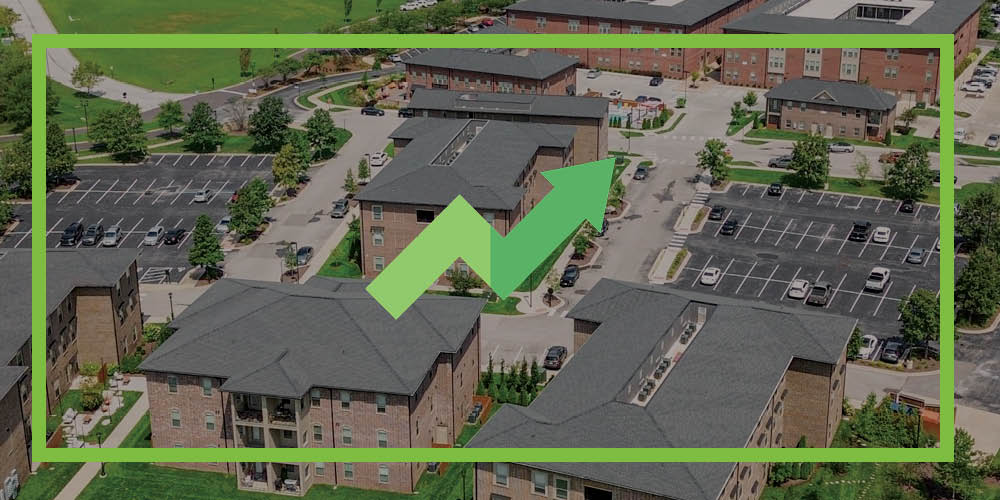
Timberland Partners has operated in the multifamily sector for over 30 years. We have been through various real estate cycles and encountered many ups and downs. Today, we find ourselves in a difficult environment, but we know from experience how important it is to put emphasis on what we do well while we tackle the challenges head on. Yes, high interest rates, oversupply of new apartments, and drastic increases in expenses such as insurance, utilities, and real estate taxes are creating headwinds for multifamily, but prudent business practices and a disciplined investment approach support notable tailwinds here at Timberland Partners.
Inflation & Supply
Headwind: Inflation & Supply of New Apartments – Soaring inflation on groceries, gas, rent, and credit card interest all hit the pocketbooks of the “rent by necessity” crowd first. Cheaper alternatives are a draw for financially-stretched renters. Further, the current oversupply of units is putting downward pressure on rents and softening some markets.
Timberland Tailwind: We are experts in multifamily and are geographically diversified.
Timberland Partners focuses solely on apartments, which positions us to utilize our deep multifamily expertise across the diverse geographies where we own real estate. Demand fluctuates by market, and we execute site-specific strategies at the property level with our vertically integrated Timberland Partners team.
On a broader scale, because housing prices and interest rates remain high, demand for rental properties will remain strong. Further, interest rates at a 22-year high have slowed the pipeline for new apartment development. While the impact won’t be immediate, this will allow time for absorption and a rebalancing of supply and demand.
Property Valuations
Headwind: Declining Values – High interest rates have significantly compressed achievable returns for many buyers who determine their purchase price based on leveraged cash-on-cash returns. This is creating a bid-ask pricing gap between buyers and sellers, halting transaction activity, and ultimately putting downward pressure on apartment values.
Timberland Tailwind: We practice discipline and patience.
Our long-term approach and portfolios are very intentional strategies. Portfolios offer diversification and, when combined with a long-term investment thesis, can mitigate the impacts of pricing and market volatility.
Looking forward, we know buying the right properties in the right markets with the right capital structure is imperative. We are well positioned to execute on acquisitions when the time is right and will remain disciplined in our approach.
Investment Performance
Headwind: Market Fundamentals Impacting Returns – Far reaching impacts of high interest rates, inflation, oversupply, and other market conditions are disrupting the ability to achieve projected returns.
Timberland Tailwind: We have a strong capital stack and a long-term perspective.
We have leveraged a significant majority of our properties with fixed-rate debt. This provides a hedge against interest rate inflation, allowing us to remain financially stable and provide investors with returns on their investments. While some properties are not meeting initial growth expectations due to market conditions, the quality and geographic diversification of our assets should allow us to succeed over the long term.
The comprehensive benefits of long-term real estate investing are difficult to see with a short-term lens. Quarterly distributions, for example, are a tangible, near-term benefit. The long-term benefit of property appreciation, however, takes time.
